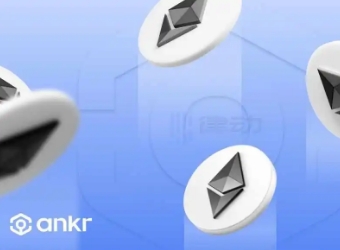Arbitrum is a Layer2 solution launched by Offchain Labs. Its founders are EdFelten, Steven Goldfeder and Harry Kalodner from Princeton University. Offchain Labs also raised a total of $120 million in round B investment from Lightspeed, Coinbase and other
Today, I want to introduce Arbitrum to you. Maybe some novice investors don't know much about Arbitrum. Let's look at what Arbitrum is and how it works.

What is Arbitrum?
Arbitrum is a Layer2 solution launched by Offchain Labs. Its founders are EdFelten, Steven Goldfeder and Harry Kalodner from Princeton University. Offchain Labs also raised a total of $120 million in round B investment from Lightspeed, Coinbase and other venture capitalists in 2021, with a valuation of $1.2 billion at that time. At present, the team is still concentrating on the development of the project, and has not issued coins and no plan for issuing coins.
Arbitrum moves transfers, smart contracts, etc. to the Arbitrum chain for solution, and only records the final results processed on Ethereum to share the number of transactions on Ethereum. The security of the final results is still maintained by Ethereum, which is an expansion solution without sacrificing security. Arbitrum uses Rollup technology, When the final results are recorded in Ethereum, multiple materials will be recorded at one time (for example, 10 transactions will be recorded on Ethereum at the same time), greatly reducing the handling fees of each transaction. Because Ethereum is now congested, the transaction costs will rise. Layer2 solutions such as Arbitrum are the core technologies that many people think can solve this problem.
At present, the main network of Arbitrum has been released in 2021/August. The total assets of on chain lock-in are about 3.1 billion dollars, which is the Layer2 scheme with the highest total lock-in at this stage. Many well-known Ethereum applications have been announced and deployed in Arbitrum, such as Curve, Sushiswap, Uniswap, Balancer, etc.
How does Arbitrum work?
Arbitrum is an Optimal Roll up mechanism. That is, it will preset that all the transaction verifiers are honest. There will be a challenge period before the transaction returns to Ethereum for confirmation. At this time, it will challenge all the nodes that want to commit fraud. Arbitrum introduces two roles to ensure that the transaction is correctly implemented: verifier and manager.
Verifier
The verifier is a node on the Arbitrum chain. It chooses to detect activities on the Rollup protocol and promote the chain. Not all nodes are considered as verifiers.
Offchain Labs hopes that the verifier can choose one of the three strategies of "active, defensive or watchtower"; However, this is not mandatory.
1. The "active verifier" will make unremitting efforts to promote the development of the chain according to the suggestions. Each chain only needs an honest active verifier; Increasing the total number of active verifiers does not improve the efficiency of the chain.
2. The "defensive validator" detects the Rollup protocol and will only take action when they witness evil acts. Or suggest an efficient block; Or pledge in the efficient block suggested by other verifiers.
3. The "watch tower verifier" checks the Rollup protocol like a defense verifier. However, when they witness evil acts, they will not personally suggest effective blocks or pledge effective blocks, but prompt other verifiers to do so.
Offchain labs will operate an active verifier on their Arbitrum chain. Most of the time, defense verifiers and watchtower verifiers do not need to do anything, so attackers will never know how many defense verifiers are on the chain.
Although anyone can become a verifier, it is estimated that the key participants are those who have invested a large number of assets in the chain, or those who have been employed as verifiers by investors.
Manager
The aggregator is responsible for supervising whether all transactions are correctly implemented by the verifier. When the aggregator thinks that the transaction is correctly implemented, he will give a signature to the transaction. At this time, before the transaction is formally packaged back to Ethereum, there will be a 7-day challenge period. All other aggregators can challenge the transactions within the challenge period. For example, when aggregator A forges a transaction and sends it to the challenge period, Once B finds that there is a problem with this transaction, it needs to pledge a fund first to challenge A's counterfeiting transaction. Finally, it is determined that A will lose the currency pledged by him when A's transaction is counterfeited, and B will receive A's token reward. According to the consensus mechanism of Arbitrum, they believe that as long as there is an honest aggregator during the challenge period, they can ensure the safety of Arbitrum.
Speaking of this, I believe you have a certain understanding of what Arbitrum is and how it works. In general, Arbitrum is an L2 expansion solution developed by the Offchain Labs team: an optimal roll up using multiple interactive challenge protocols. Arbitrum's flagship chain was announced to developers on May 28. Once the number of projects reaches a certain level, it will be open to users. From the user's perspective, there is almost no difference between interaction with the Arbitrum chain and interaction with Ethereum.
















 Tue, 18 Apr 2023
Tue, 18 Apr 2023
